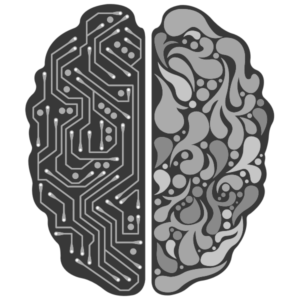As an instructional designer and former English teacher, I have mixed feelings about using A.I. to produce school work. If there is a learning outcome that is legitimately met by a particular tool (including AI), then fine – let’s include that. Apart from that, the actual definition of plagiarism is the practice of taking someone else’s work or ideas and passing them off as one’s own, which is what things like ChatGPT actually do. But this has been a common problem throughout the history of education. How do we mitigate this issues? Here are some suggestions:
- Teach learning as a process. For instance, require students to turn in the various stages of their paper – outline, concept maps, discovery draft, bibliography, etc. then the assessment becomes a record of the students’ learning process rather than the production of a paper.
- Dedicate a class session to academic integrity. This lets the students know that you value academic honesty. Make sure they get a copy of the school’s academic honesty policy. Some even go so far as having the students sign a statement that says that they read and understand the policy. Often if students know what the expectations are, they will meet or exceed them.
- Ask deeper questions. If the answers the students are giving you are coming from Wikipedia, AI, Course Hero or other cheating sites, then you are asking the wrong questions.Take a look at Bloom’s Taxonomy and think about what kind of work you are asking your students to do. Use the Constructivist approach and ask students to apply new information to their past experiences and prior knowledge. Students learn best when they are able to apply what they are learning to past experience.
- Scaffold your assignments so the solutions to the next problem are based on what they learned solving previous problems.
- Know your students. Get to know your students by asking them to keep a journal. Or begin the day with a short in-class writing assignment. If you know how they express themselves and at what level their writing is at, any changes would be a red flag for issues in the students’ work.
- Let your students connect. Have the students work together on their revisions or projects. Have them discuss their research in groups. This encourages students to bring their research to their audience. Also, this allows students to see how other students tackle assignments and research problems. Students will turn to tools like AI when they feel they do not have the support necessary to do their work. As an instructor, you have the opportunity to create community in your classroom to provide that support.
- Project-based learning asks students to actively engage in “real-world and personally meaningful projects.” Often, students turn to short-cuts in learning because they do not feel ownership of their learning. Create a space in the curriculum for students to creatively appy what is important to them.
- Make it relevant. Don’t just ask students to take a position on a topic and argue for it. Require that they use a few current news sources in their paper. I love teachers who complain about reading the same death penalty papers year after year. Change the assignment! Ask them to bring in a topic from the headlines. Have them find out what journalists or writers are covering their topic.
- Model academic integrity. Some of the same teachers who get worked up about plagiarism will sometimes be the same teachers who do not cite sources in their own class materials. Show students how it is done and why early and often. Start with that favorite quote or picture you put in your syllabus.
- Explore Open Pedagogy and student-driven curricula. Open pedagogy is the deepest form of student-driven curricula. According to Mavs Open Press, open pedagogy is a form of experiential learning in which students demonstrate understanding through the act of creating content. Students can demonstrate their understanding of a topic by creating assignments. Who knows? Maybe the decisions your students make will include AI, but create a space in your class to talk about the implications and issues around AI in education.
The most important thing is that we do not let the tools define education; define education and leverage the appropriate tools to support that definition. We should not let AI become the next learning management system (the tools define the teaching). If you have other ideas for promoting academic integrity in the Age of AI, I would love to hear from you in the comments!





